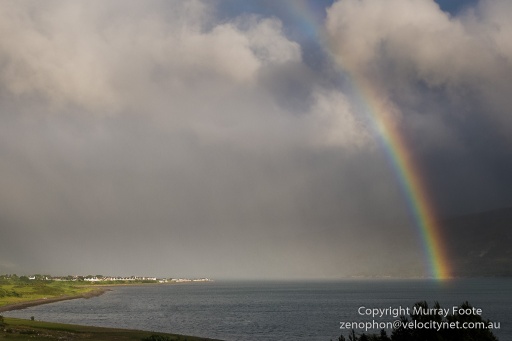Scotland. Day 6, 4th July.
Back on the main road and heading south towards Ullapool, this is Ardvreck Castle on Loch Assynt.
Ardvreck Castle was built in the late 15th century by Angus Mor III, Lord of the Isles, based in Islay and semi-independent from the Scottish throne. Originally it was a simple square tower rather like Castle Varrich and extended about a century later. However, the local lairds were the MacLeods, based in Skye, and it was the MacLeods who lived there for the first couple of centuries.
In 1650, James Graham, the Marquis of Montrose, sought refuge in the castle. He had been trying to foment a general rebellion against the Scottish government of the Covenanters on behalf of Charles Stuart, the Old Pretender, but had lost at the Battle of Carbisdale. However, he was handed over to the Government and subsequently executed.
In 1672, the MacKenzie clan successfully beseiged the castle and took it over together with the surrounding lands.
The castle was effectively ruined when it was hit by lightening in 1795.
Several ghosts are rumoured to haunt the castle. One is a young woman said to have thrown herself from the tower after being betrothed to the Devil in attempt to save the castle. Another is a man in grey.
.
The MacKenzies constructed Calda House in 1726 as a more modern residence to replace the castle. However, building the house and their extravagent lifestyle plunged the family into debt and they were forced to sell to the Earl of Sutherland. The house burned down in 1737 because retainers of the MacKenzies preferred to see it destroyed rather than family of the Earl of Sutherland move in.
.
.
In Ullapool for a meal later that night, I encountered the local Pipe Band marching through the town.
.
Ullapool is a fishing port as well as a ferry terminal.
This looks towards Ullapool from where I was staying. The next morning I caught the ferry to Lewis.














Pingback: Journey to North Atlantic – Itinerary and Index of Posts | Murray Foote
Such substantial buildings, I am in awe of their construction methods way back then. Love the rainbow in Ullapool.
LikeLike
Yes. There must have been an awful lot of labour building the stone castles and given the draconian history of labour relations in the Highlands you have to wonder how much compulsion was involved.
LikeLike